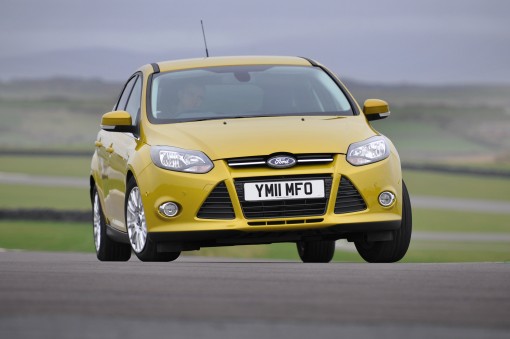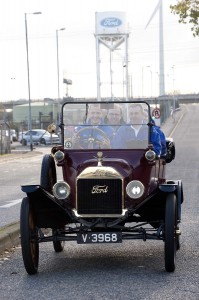Focus-ing on Fords, old and new 100 years apart
As Ford marks its Centenary, motoring writer KEITH WARD compares the old and the new.
FORD aim to carry on leading the UK car charts with a smooth change to the all-new Focus now entering their 550 showrooms.
This is Ford of Britain’s centenary year. At Press previews of the 2011 Focus they had on hand a working example of the famous Model T, which went into European production at Trafford Park, Manchester, 100 years ago.
Some contrast, to jump from the spartan, open-sided cab of the so-called Tin Lizzie, worked by a primitive system of foot pedals and levers, to the new Focus, festooned with the latest electronic gadgetry.
Never has a car in this everyday class offered the sort of gizmos hitherto confined to the toffs of the motoring classes, even if many of them are extra-cost options.
There’s a Driver Assistance Pack at £750 which senses if you are wandering out of your lane and steers you back on course, brakes for you if you are about to crash into the vehicle in front, spots traffic signs and relays them to your dashboard screen, alerts you if you grow drowsy, will reverse the car into a parking space it judges to be long enough and covers blind spots in your mirrors with a light to warn you an overtaking vehicle is at your shoulder.
“Such technologies are not readily available in the Focus class”, says Ford of Britain boss Nigel Sharp. “BMW offer some on the 7-series – priced fro £1,110 upwards..”
Goodies standard on every new Focus, at prices from just below £16,000, are voice-activated Buetooth, USB connections, DAB digital radio, a category 1 alarm and an anti-skid Torque Vectoring Control system, which distributes power to the front wheels in the manner of a limited slip differential. It made its debut last year in the new C-MAX version.
DAB radios will currently not yet work digitally in wide areas of Britain – including the Glasgow area chosen for Press previews. Nigel Sharp sees it as a virtue to sell cars now which will not be outdated in four years’ time when reception should be universal. Meanwhile the radios work on FM and AM channels.
The latest Focus (German built) drives quietly and well, in keeping with Ford’s improved standards of design, build and reliability over recent years. We first tried a punchy 2.0-litre TDCi diesel with six-speed manual box, averaging 48.4 mpg on its computer against an official combined rating of 56.5, and emitting a lowly 129 g/km of CO2. In second-top Titanium trim it costs £20,745, but extra gadgets inflated that to £23,715.
Enjoyed even more was Ford’s new 150 PS, 1.6 EcoBoost turbo petrol engine, mated to a six-speed manual box, which gave 37.2 mpg on the road against an official 47.1, and 139 g/km emissions. This model in Titanium trim is priced at £19,745.
All 1.6-litre versions, petrol and diesel, cut out when stationary to save fuel, with CO2 emissions as low as a tax-avoiding 109 g/km.
Best seller is expected to be a 115 bhp 1.6 TDCi diesel in Zetec trim at £18,495.
The Focus has sold more than 1.4m in Britain since its launch in 1998. It was third overall in the UK charts for last year. Boosted by orders for the new model, it’s back at number one. An estate version joined the five-door hatchback in May.
THE VITAL STATISTICS
At 4,358 mm by 1,832 mm is longer and narrower as well as lower, lighter and stiffer
Engine choice at launch three petrol and four diesel
Is built in Germany, USA and, later this year, in Russia.
Is to be sold as a “world car” in 120 countries
Four trim levels: Edge, Zetec, Titanium, Titanium X
UK sales target 90,000 a year
Prices from £15,995 to £25,095


